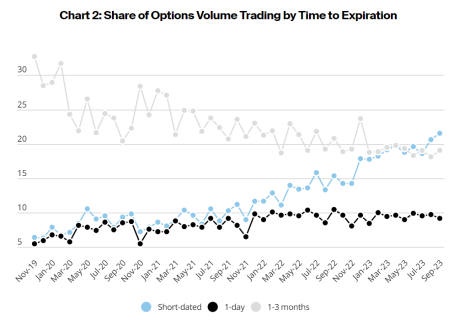Investors love stock splits for some reason that I’ve never quite been able to grasp. If you’re a shareholder, you own the same dollar amount of shares and the same stake in the company. If the company pays a dividend you’ll get the same amount.
Even your relative share of earnings is unaffected by stock splits. You have more shares each getting a proportionately smaller amount of earnings. 100 shares of a stock getting $1 of earnings each is no different from 200 shares getting $0.50 of earnings each. Your “share” of that company’s earnings is $100 either way.
But nonetheless, investors love them. And so does the market.
As an example, shares of Chipotle (CMG) rose 7% on the day of their recent 50-for-1 share split announcement.
The split, effective after the market close on June 25, 2024, will take CMG shares from just shy of 3,000 to right around 60 apiece, depending on where CMG is trading in June.
While I may not understand investors’ interest in stock splits, I can certainly understand a company’s interest in undertaking a forward split.
There are minimal costs to it (just administrative), Wall Street loves it, and you’ll get good headlines and it’ll (in all likelihood) help boost your share price.
But is that really the only rationale that Chipotle had for splitting the shares?
After all, it’s one of the “largest” in history. (Largest here meaning biggest forward split ratios; Alphabet (GOOGL) and Amazon (AMZN) both underwent 20-for-1 stock splits in 2022. There have been a number of larger splits in the other direction where low-priced issues reverse split 1-for-100 to try and stabilize share prices.)
Per the company’s press release announcing the split, it’s intended to facilitate ownership by employees:
“This is the first stock split in Chipotle’s 30-year history, and we believe this will make our stock more accessible to employees as well as a broader range of investors,” said Jack Hartung, Chief Financial and Administrative Officer, Chipotle. “This split comes at a time when our stock is experiencing an all-time high driven by record revenues, profits, and growth.”
Two takeaways from those talking points: 1) The split is irrelevant as far as “record revenues, profits, and growth” are concerned; those record returns are just going to be distributed (split as it were) among a larger number of shares. 2) Employee accessibility to shares isn’t nothing.
From a practical standpoint, low-wage fast-food workers participating in a stock purchase plan are likely to feel materially better about doing so when a quarter’s worth of contributions is now buying whole shares rather than fractional shares.
An employee earning $15 an hour, working 40 hours per week and investing 15% of their pay in a stock purchase plan (which appears to be the cap for CMG’s plan per a cursory online search) could set aside $360 a month, or $1,080 a quarter. That translates to roughly one-third of a single share. From a purely psychological perspective, it must be frustrating to allocate as much as you possibly can into a stock purchase plan and to see the fruits of your labors translate into just over one share per year.
It’s not hard to imagine low employee participation or at least grumbling by low-level employees about their employee stock purchase plan (ESPP). The split does a meaningful job of addressing those issues without any material changes to the company’s operations, ESPP or compensation.
We could, in all fairness, take the company’s press release at face value. It offers a psychological benefit (if not a financial one) for employees without costing the company a dime.
Or…
… we could dig a little deeper and focus on their stated goal of making shares “more accessible” to a “broader range of investors.”
Perhaps this is the cynic in me speaking, but I suspect that after offering a stock purchase plan for nearly 13 years (SEC filings indicate that the first ESPP was approved in May of 2011), there may be more to the stock split decision than improving employee participation in a decade-old plan.
Again, we can take the explanation at face value and see this as a fix for a slow-burn problem that is being exacerbated by the high share price. The calculation above would have been less frustrating for employees in 2019, say, when shares were trading at a fifth of their current value (even with lower wages, employees may have been able to buy a full share each quarter).
But I suspect this is more of a response to a modern investing dynamic than an employee dynamic: options.
The retail share of options trading skyrocketed during the pandemic, rising from about 35% of options contracts in November of 2019 to nearly 50% of options contracts now (high was 48% in May 2020, consistently near 45% in the years since).
And those retail options traders are gravitating to shorter-dated contracts, as you can see in the chart below (both the figures above and the chart below are from the NYSE):
High-priced shares are largely irrelevant if you’re a long-term investor who can afford to allocate $3,000 or more to a single position. But they’re prohibitively expensive if you’re a small-stakes trader looking for short-term options contracts because even an at-the-money call with a one-week expiration may be more than you can afford to trade, routinely $4,000 per contract or more.
The growing casino-ification of the markets by retail investors using quick-hitting options trade has been undeniable since the pandemic and subsequent meme stock frenzy. It’s not a stretch to imagine that this decision could have been made in service to those traders.
I’m not saying that Chipotle saw the GameStop (GME) saga and thought they’d be the next stock to go “to the moon,” but trader sentiment matters and it’s tough to foster positive trader sentiment if your expensive shares price them out of participation.
Perhaps this is all unwarranted speculation and employee frustration with the stock purchase plan is actually the primary motivator for the share split (that, and the market loves stock splits), but I suspect that the company saw how the market winds were blowing and felt like they were being left behind by fresh market dynamics that are favoring lower-priced options on already popular stocks.


